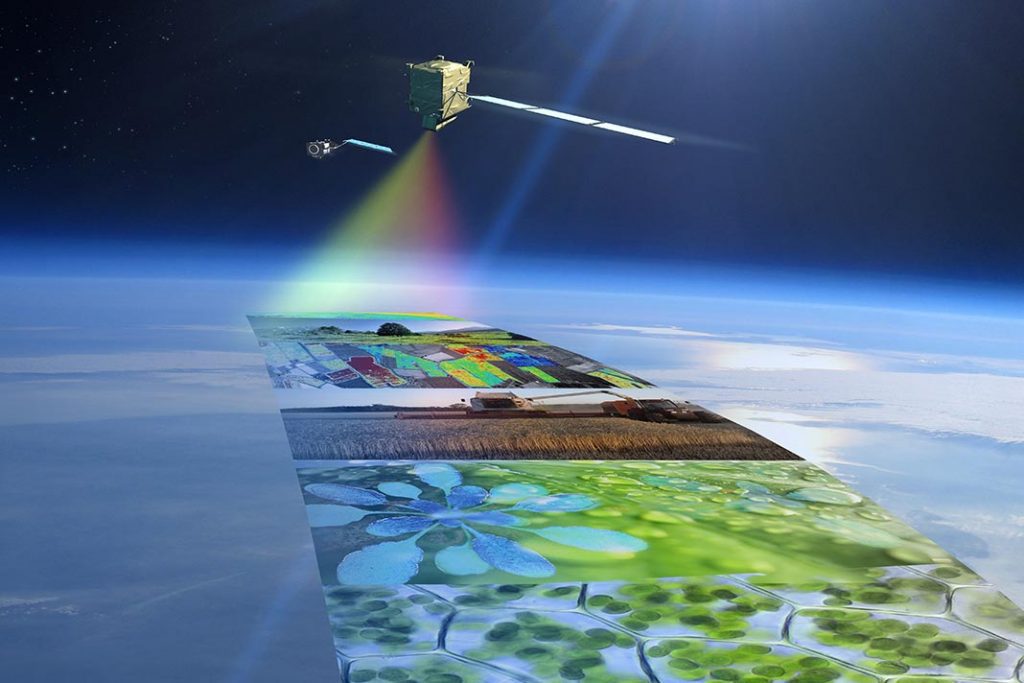Introduction
The goal of this piece is to provide strategies and insights on how to utilize large-scale environmental data sets in order to create well-informed policies that can help mitigate the impacts of environmental issues. By understanding the importance of environmental big data, we can better grasp its potential to address complex challenges we face today. In this first section, we will introduce you to the concept of environmental big data and highlight why it is crucial for sound policy development.
As global challenges such as climate change, biodiversity loss, and pollution continue to grow, it has become increasingly important for policymakers to make informed decisions based on accurate and comprehensive data. This is where the concept of environmental big data comes into play. Environmental big data refers to the massive amounts of information generated from various sources that can be used to analyze and understand complex environmental phenomena.
One key advantage of using big data for policy development is that it allows us to observe trends and patterns that may not be apparent when looking at smaller-scale datasets. This enables us to make better predictions about future conditions, which can ultimately lead to more effective policies. Additionally, by incorporating a wide range of data sources, we can develop a more holistic understanding of the environment and the various factors that influence it.
However, leveraging environmental big data for policy development is not without its challenges. We must consider issues such as data quality, privacy concerns, and limited access to resources and expertise. Despite these obstacles, there are numerous examples of successful implementation of environmental big data in policy development, including climate change adaptation policies and biodiversity conservation initiatives.
In the following sections, we will delve deeper into the world of environmental big data – exploring its importance in policy-making, discussing strategies for utilizing it effectively in policy development, examining potential tradeoffs and challenges associated with its use, and providing real-world examples of successful implementation. By the end of this article, we hope you will have gained valuable insights into how environmental big data can be harnessed for effective policy development and feel inspired to apply these strategies in your own work or advocacy efforts.
Insights for Policy Development from Environmental Big Data
Leveraging environmental big data for effective policy development can provide valuable insights and inform evidence-based decision-making. Here are some insights into how environmental big data can be leveraged for policy development:
- Identifying Patterns and Trends: Environmental big data can help identify patterns and trends in various environmental factors such as air quality, water quality, biodiversity, and climate change. Analyzing large datasets can reveal long-term trends, seasonal variations, and spatial patterns, which can inform policy development.
- Assessing Environmental Impacts: Big data analytics can be used to assess the environmental impacts of various activities and policies. By analyzing data on emissions, resource consumption, land use, and other factors, policymakers can understand the environmental consequences of different policy options and make informed decisions.
- Predictive Modeling: Environmental big data can be used for predictive modeling to anticipate future environmental conditions and their potential impacts. By analyzing historical data and using advanced modeling techniques, policymakers can assess the effectiveness of different policy scenarios and make proactive decisions.
- Targeted Interventions: Big data analytics can help identify areas or communities that are disproportionately affected by environmental issues. By analyzing demographic data, pollution levels, and health outcomes, policymakers can develop targeted interventions and policies to address environmental justice concerns.
- Monitoring and Compliance: Environmental big data can facilitate real-time monitoring and compliance with environmental regulations. By collecting and analyzing data from sensors, satellites, and other sources, policymakers can track environmental indicators, detect violations, and enforce compliance with environmental standards.
- Stakeholder Engagement: Big data can enhance stakeholder engagement and participation in policy development processes. By making environmental data accessible and transparent, policymakers can involve citizens, scientists, and other stakeholders in decision-making, fostering collaboration and accountability.
- Policy Evaluation: Environmental big data can be used to evaluate the effectiveness of existing policies and interventions. By analyzing data on environmental indicators, economic outcomes, and social impacts, policymakers can assess the outcomes of policies, identify areas for improvement, and refine future policy development.
Strategies for Utilizing Environmental Big Data in Policy Development
The key to leveraging this vast amount of information lies in proper data integration and management, as well as employing advanced analytics and modeling techniques.
Data Integration and Management
Data integration and management are crucial steps in the process of utilizing environmental big data. With a variety of sources providing different types of data, it is essential to bring them together in a meaningful way.
The first step towards successful data integration is the standardization and harmonization of data. This involves ensuring that all datasets are consistent, compatible, and follow common standards. By doing so, we can effectively compare and analyze different datasets to generate valuable insights that can be used to shape policy decisions.
Another important aspect of data management is the storage and security of the collected information. As environmental big data can be sensitive, it is vital to store it securely while also making it easily accessible to relevant stakeholders. Employing cloud-based storage solutions and implementing strong encryption methods are some ways to ensure data security.
Related article: Cloud Storage vs Local Storage for Environmental Data
Advanced Analytics and Modeling Techniques
Machine learning (ML) and artificial intelligence (AI) have become powerful tools for analyzing large volumes of complex environmental data. These technologies enable us to identify patterns, trends, and relationships within the data that would be difficult or impossible to detect using traditional methods. By incorporating ML and AI into our analysis process, we can develop more accurate models to predict future environmental conditions and make better-informed policy decisions.
Geospatial analysis plays a significant role in understanding the spatial distribution of various environmental factors. By combining geographic information system (GIS) technology with environmental big data, we can create detailed maps that visualize the impact of different policies on specific geographic areas. This helps policymakers identify areas requiring immediate attention or intervention.
Related article: The Benefits of Cloud Native Geospatial File Formats
Effectively utilizing environmental big data in policy development involves integrating diverse datasets, managing them securely, and employing advanced analytical techniques such as machine learning and geospatial analysis. By adopting these strategies, policymakers can leverage the power of big data to make informed decisions that promote sustainability and protect our planet’s resources.
Balancing Tradeoffs in Environmental Policy Development
Developing effective environmental policies is a complex task that involves balancing various tradeoffs. In this section, we will explore some of the key tradeoffs that policymakers must consider when leveraging environmental big data to create sustainable policies.
Economic Growth versus Environmental Protection
One of the most common tradeoffs faced by policymakers is balancing economic growth with environmental protection. While economic development can improve living standards and reduce poverty, it often comes at the cost of increased pollution, resource depletion, and habitat destruction. Policymakers must weigh the benefits of economic growth against the potential harm to the environment and develop strategies that promote sustainable development. Environmental big data can help policymakers identify areas where economic growth can occur with minimal environmental impact and design policies that strike a balance between these competing priorities.
Short-term versus Long-term Impacts
Another important tradeoff to consider is the balance between short-term and long-term impacts. Some policy decisions may yield immediate benefits but have negative long-term consequences for the environment or future generations. For example, a policy that encourages deforestation for agricultural expansion might boost short-term food production but lead to long-term declines in biodiversity and ecosystem services. By leveraging environmental big data, policymakers can better understand these complex relationships and develop policies that prioritize long-term sustainability over short-term gains.
Local versus Global Considerations
Environmental issues often transcend local, regional, and national borders. Policymakers must take into account both local and global considerations when developing policies to address these challenges. For instance, a policy aimed at reducing local air pollution might have unintended consequences for global climate change if it promotes the use of fossil fuels over renewable energy sources. With the help of environmental big data, policymakers can gain insights into how local actions might affect global outcomes and vice versa. This information can be used to design policies that are effective at multiple scales, from local communities to international agreements.
Real-World Examples of Effective Implementation of Environmental Big Data in Policy Development
In this section, we will discuss two case studies: climate change adaptation policies and biodiversity conservation initiatives.
Climate Change Adaptation Policies
Climate change is one of the most pressing issues our planet faces today. Developing effective policies to mitigate its impacts requires a comprehensive understanding of various factors, such as greenhouse gas emissions, temperature trends, and sea-level rise. Environmental big data plays a crucial role in informing these policies by providing accurate and up-to-date information on climate-related variables.
For example, the United Nations Framework Convention on Climate Change (UNFCCC) relies on environmental big data to monitor the progress of countries in reducing greenhouse gas emissions. This data is collected from various sources, including satellite imagery, ground-based measurements, and national inventories. By analyzing this data, policymakers can identify trends and patterns in emissions and develop targeted strategies for reducing them.
The Netherlands has developed a comprehensive set of adaptation policies based on extensive analysis of environmental data. This has allowed them to identify areas at high risk for flooding due to sea level rise and extreme weather events. Based on this information, the Dutch government has implemented innovative infrastructure projects, such as the Room for the River program, which aims to create more space for rivers to safely overflow during periods of heavy rainfall.
Another example is the use of environmental big data in developing early warning systems for extreme weather events. These systems rely on large amounts of data from weather stations, satellites, and other sources to predict potential disasters such as hurricanes, floods, and droughts. By providing timely information on these events, early warning systems enable governments to take preventive measures and minimize their impact on people and ecosystems.
Related article: Environmental Big Data for Climate Change: Benefits, Challenges, and Applications
Biodiversity Conservation Initiatives
Biodiversity conservation is another critical area where environmental big data can play a significant role in policy development. Biodiversity refers to the variety of life on Earth, encompassing genes, species, ecosystems, and their interactions. Preserving biodiversity is essential not only for maintaining healthy ecosystems but also for ensuring human well-being.
One notable example of using environmental big data in biodiversity conservation is the Global Biodiversity Information Facility (GBIF). GBIF is an international network that provides free access to biodiversity data from around the world. By aggregating data from multiple sources, GBIF enables researchers and policymakers to assess the state of global biodiversity and develop appropriate conservation strategies.
Similarly, remote sensing technologies have revolutionized our ability to monitor habitat loss and land-use changes. Satellite imagery can provide detailed information on land cover at various spatial scales, allowing for better decision-making regarding land-use planning and habitat protection efforts. For instance, Brazil’s Amazon Environmental Research Institute uses satellite imagery to track deforestation rates in the Amazon rainforest. This information helps policymakers design effective strategies for mitigating habitat loss and conserving biodiversity.
Related article: How can technology help conserve biodiversity?
Conclusion
As we have explored throughout this article, leveraging environmental big data for effective policy development is both a challenging and rewarding endeavor. By understanding the importance of environmental data, implementing strategies for its utilization, and addressing the inherent challenges, we can develop more informed and robust policies aimed at preserving our planet for future generations.
The strategies discussed in this article, such as data integration and management, advanced analytics and modeling techniques, and balancing tradeoffs in policy development, highlight the need for interdisciplinary collaboration among scientists, policymakers, and other stakeholders. By working together to harness the power of big data, we can make better decisions that promote sustainable economic growth while protecting our environment.
While there are challenges associated with using environmental big data in policy development, such as data quality issues and privacy concerns, these can be mitigated through appropriate planning and resource allocation. Ensuring that decision-makers have access to reliable data sources and expertise is critical in addressing these challenges effectively.
The real-world examples of successful implementation of environmental big data in policy development serve as inspiration for us to continue exploring innovative ways to use this valuable resource. From climate change adaptation policies to biodiversity conservation initiatives, the potential applications of big data in environmental policymaking are vast and hold great promise for improving our understanding of complex ecological systems.
In conclusion, I hope that this article has provided valuable insights into the opportunities and challenges associated with leveraging environmental big data for policy development. As technology continues to advance and our ability to collect and analyze vast amounts of data improves, it is crucial that we seize this opportunity to develop more effective policies that safeguard the health of our planet. By embracing the power of big data and fostering interdisciplinary collaboration, we can create a brighter future for ourselves and generations to come.
Next Steps
Round Table Environmental Informatics (RTEI) is a consulting firm that helps our clients to leverage digital technologies for environmental analytics. We offer free consultations to discuss how we at RTEI can help you.


